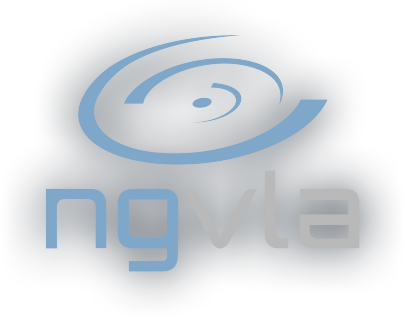Galactic Evolution: ngVLA Key Science Goal 3
Video Credit: S. Dagnello, NRAO/AUI/NSF
Science Video • January 1st, 2019
The ngVLA will provide a 10x improvement in depth and area for cold gas surveys in galaxies to early cosmic epochs, and will enable routine sub-kiloparsec scale resolution imaging of the gas reservoirs. The ngVLA will afford a unique view into how galaxies accrete and expel gas and how this gas is transformed inside galaxies by imaging their extended atomic reservoirs and circum-galactic regions, and by surveying the physical and chemical properties of molecular gas over the local galaxy population. These studies will reveal the detailed physical conditions for galaxy assembly and evolution throughout the history of the Universe.
Left – With its unparalleled sensitivity, the ngVLA will routinely detect molecular gas in “normal” star-forming galaxies at z=6, including the critical low-J transitions that remain inaccessible to ALMA. The ngVLA planned sensitivity is illustrated by the blue lines, with a gap between 50 and 70 GHz due to the 60 GHz telluric oxygen band that is opaque. Right – The ngVLA will provide more than an order of magnitude improvement in our knowledge of the cold molecular gas density throughout cosmic time compared to the best efforts possible with the VLA (e.g., Riechers, D. et al. 2019) or ALMA (e.g., Decarli, R. et al. 2019) by providing direct access to low-J CO transitions into the Epoch of Reionization. The low-J CO transitions that will be reached with the ngVLA have low density and temperature excitation requirements, and thus trace much better the bulk of the molecular material and its mass. The key capabilities necessary for this science are high sensitivity and continuous coverage at frequencies from a few GHz to 116 GHz, plus high angular resolution to be able to uniquely locate counterparts as well as to resolve individual high-z sources and obtain kinematics. In the local universe, these capabilities will deliver spectacular imaging of molecular gas in galaxies, resolving individual GMCs at distances of ~100 Mpc and producing measurements of faint CO isotopologues and density tracers such as HCN. For the HI 21cm line emission, the sensitivity of the ngVLA will allow it to easily deliver arcsecond-resolution imaging and kinematics capable of tracing feedback processes such as expanding wind-driven bubbles, a feat impossible today.




